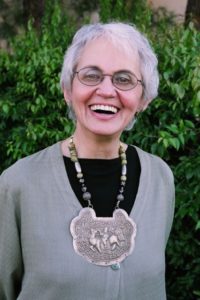
767859
Karma Yoga, the path of selfless service, is a main branch of the classical Integral Yoga system. Integral Yoga founder, Swami Satchidananda, considered the spirit of Karma Yoga as foundational to the practice of Yoga. In this article, Rachel Naomi Remen, MD, captures the heart of Karma Yoga.
In recent years the question, “How can I help?” has become meaningful to many people. But perhaps there is a deeper question we might consider. Perhaps the real question is not “How can I help?” but, “How can I serve?” Serving is different from helping. Helping is based on inequality; it is not a relationship between equals. When you help you use your own strength to help those of lesser strength. If I’m attentive to what’s going on inside of me when I’m helping, I find that I’m always helping someone who’s not as strong as I am, who is needier than I am. People feel this inequality. When we help we may inadvertently take away from people more than we could ever give them; we may diminish their self-esteem, their sense of worth, integrity and wholeness.
When I help I am very aware of my own strength. But we don’t serve with our strength, we serve with ourselves. We draw from all of our experiences. Our limitations serve, our wounds serve, even our darkness can serve. The wholeness in us serves the darkness in others and the wholeness in life. Helping incurs debt. When you help someone they owe you one. But serving, like healing, is mutual. There is no debt. I am as served as the person I am serving. When I help I have a feeling of satisfaction. When I serve I have a feeling of gratitude. These are very different things.
Serving is also different from fixing. When I fix a person I perceive them as broken, and their brokenness requires me to act. When I fix I do not see the wholeness in the other person or trust the integrity of the life in them. When I serve I see and trust that wholeness. It is what I am responding to and collaborating with. There is a distance between ourselves and whatever or whomever we are fixing. Fixing is a form of judgment. All judgment creates distance, a disconnection, an experience of difference. In fixing there is an inequality of expertise that can easily become a moral distance. We cannot serve at a distance. We can only serve that to which we are profoundly connected, that which we are willing to touch. This is Mother Teresa’s basic message. We serve life not because it is broken but because it is holy.
If helping is an experience of strength, fixing is an experience of mastery and expertise. Service, on the other hand, is an experience of mystery, surrender and awe. A fixer has the illusion of being casual. A server knows that he or she is being used and has a willingness to be used in the service of something greater, something essentially unknown. Fixing and helping are very personal; they are very particular, concrete and specific. We fix and help many different things in our lifetimes, but when we serve we are always serving the same thing. Everyone who has ever served through the history of time serves the same thing. We are servers of the wholeness and mystery of life. The bottom line, of course, is that we can fix without serving. And we can help without serving. And we can serve without fixing or helping. I think I would go so far as to say that fixing and helping may often be the work of the ego, and service the work of the soul. They may look similar if you’re watching from the outside, but the inner experience is different. The outcome is often different, too.
Our service serves us as well as others. That which uses us strengthens us. Over time we burn out. Service is renewing. When we serve, our work itself will sustain us. Service rests on the basic premise that the nature of life is sacred, that life is sacred, that life is a holy mystery which has an unknown purpose. When we serve, we know that we belong to life and to that purpose. Fundamentally, helping, fixing, and service are ways of seeing life. When you help you see life as weak, when you fix, you see life as broken. When you serve, you see life as whole. For the perspective of service, we are all connected: All suffering is like my suffering and all joy is like my joy. The impulse to serve emerges naturally and inevitably from this way of seeing.
Lastly, fixing and helping are the basis of curing, but not of healing. In 40 years of chronic illness I have been helped by many people and fixed by a great many others who did not recognize my wholeness. All that fixing and helping left me wounded in some important and fundamental ways. Only service heals.
About the Author:
(This article is reprinted from In the Service of Life, Noetic Sciences Review, Spring 1996.)

 Rachel Naomi Remen, M.D., has been counseling those with chronic and terminal illness for more than twenty years. She is co-founder and medical director of the Commonweal Cancer Help Program in Bolinas, California and is currently clinical professor of family and community medicine at the University of California at San Francisco School of Medicine. For more info:
Rachel Naomi Remen, M.D., has been counseling those with chronic and terminal illness for more than twenty years. She is co-founder and medical director of the Commonweal Cancer Help Program in Bolinas, California and is currently clinical professor of family and community medicine at the University of California at San Francisco School of Medicine. For more info: 